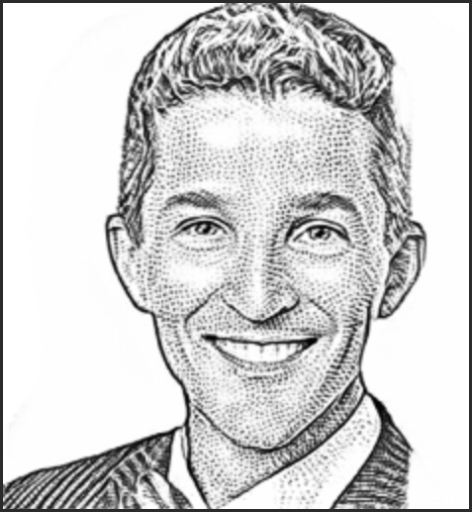
This week’s column is not really about showing a house. I am being both literal and metaphorical, relevant for those of you in another line of work. It’s about being purposeful in everything we do. I’ll begin with a story from the Army.
Sergeant Cornelius had previously been a General’s aide. When interviewing new, young officers for the General’s staff the General made them wait in his office, served them too much coffee in a too hot or too cold room, did not give them access to a bathroom, and made sure one leg of their chair was too short. The pictures on the wall were crooked, and the lieutenant was given an assignment that he couldn’t complete. Maybe it was a broken pen? I forget. The General was manipulating the situation as a test. Did the officer complain? Did he complete the assignment? Sweating, with too much coffee and a wobbly chair was he easily distracted? The General wanted to control every aspect of the job interview to learn how his officers might perform in an uncomfortable situation, under pressure, a behavioral experiment.
In Sierra Vista, Arizona I knew a popular bar with full dance floor. The bar owner would sometimes stop me mid-sentence, put his hand to his ear and take a moment, counting the beats of music. When I asked him why he did this he explained that over the course of the evening the speed and intensity of the music would rise, song after song, imperceptibly, until it would crash with a slow song. Then, the process would repeat, probably 5 times in an evening. When the slow song was played the dance floor would empty, the bar would fill, and drink sales rose. There was a scientifically optimal sequence to the rising, and crashing, of the music and its correlation with profit.
In the 1990’s I worked for King-Casey on Pine Street in New Canaan, a marketing and design firm that discovered and pioneered (mad men, since 1953) many of these in-store behavioral manipulations that have become commonplace today. In many cases we’ve forgotten why we do what we do, it’s now become habit and convention. King-Casey designed the fast-food experience for Burger King, Subway, Denny’s and Hardees, the big box store experience at Walmart and Home Depot, and reinvented the drive-thru experience to maximize profits.
It is with these lessons that I ask, “Why is the real estate industry so unscientific about showing a house? Have we learned nothing in the past century about the right way, and wrong way, to show a house?” Is the process of seeing a house so unscientific that it is left to the individual agent and possibly her own experience buying a house?
I first encountered this with the legendary David Ogilvy in Greenwich. This is where I learned there was a right way to show a house. You always start at the front door, showing the formal rooms and ending in the kitchen before heading upstairs. “Showing the house” was not a one-way experience where the agent tells and the client listens. The presentation was not rigid, but tuned to each particular client, and the process was iterative, changing based on the feedback. You might say that David was able to dial up the beats per minute or bring them back down depending on the circumstances.
How many homes can I show in one day? Susan Engel taught me to reign it in, that it is possible to show too many homes. Some customers say “I’ll be in town only one day and I want to see everything.” Susan says 5 homes was the absolute limit after which there was a rapidly diminishing attention span. You may think you want to rush through 12 but Susan says her value is knowing which 5 and why.
Features and benefits. They teach you in Marketing 101 to sell the benefits, not the features, and yet many house tours are a rehash of the listing description, “here is the living room, and it has a fireplace, and here is the dining room…” The better house tours verbalize out loud what it is like to live in the house: this mudroom is perfect for smelly hockey equipment; you’ll get the morning light here in the Primary, this pantry is both convenient but hidden.
So, I called Susan for the secrets to properly showing a home. The first lesson learned 40 years ago, is bring a pen and take copious notes. I take many pages of notes when I am pricing a house, writing down what the owner tells me about the home, and I take notes on what my prospect is looking for to remember better, and tailor the presentation. It begins with knowing the house completely. If you don’t then your prospect will know it.
Take notes on your prospect and adapt the presentation to the prospect. Sun Tzu wrote 2500 year ago, “Those who are able to adapt…are called divine.” Susan’s version, “If you don’t get it right you waste a lot of time.” And then, “Do not dismiss the importance of the entrance and the living room,” she went on, “I show them the way a guest experiences it, you want the emotional “ah” moment.”
Clearly, the role of the showing agent is to sell, not merely describe, and to do so based on a masterful understanding of the house and how it compares to others in the market. It requires active listening skills to adapt to the prospect. And, while those formal rooms may occupy only a small fraction of our lives, they say a lot about our personality, the style of the house, and often provide the “ah” moment of connection, so don’t ignore them on the way to the “entertaining” kitchen.
Finally, I asked Susan if there’s a book on it. No. Susan said you watch the great ones and learn how they do it. Just like golf.
John Engel, a Realtor with Douglas Elliman, is the son of Susan Engel. Susan began selling houses at Mabel Lamb in 1983 and later Brotherhood & Higley when Mabel sold the firm. When John joined Susan in 2008 as an unprecedented 25 year hot-streak was ending, Susan said, “Becoming an agent now is like starting to sell popcorn in the 9th inning of a ball game.” Eternally optimistic, I am my mother’s son.
Submit questions and comments to John.Engel@Elliman.com



